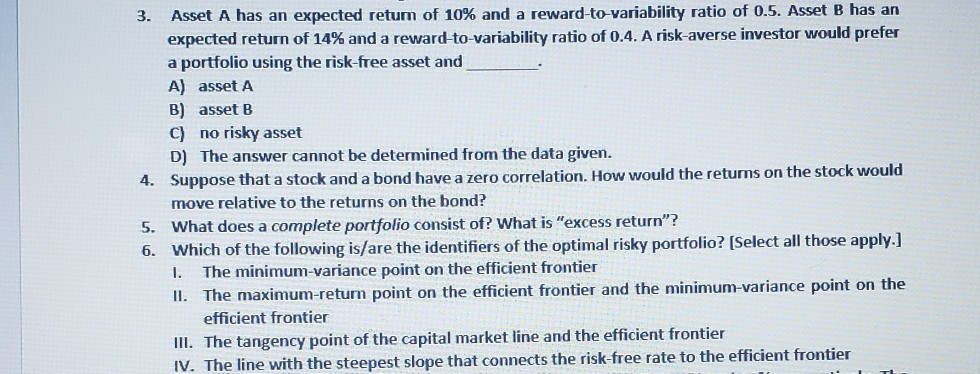Answered step by step
Verified Expert Solution
Question
1 Approved Answer
3. Asset A has an expected return of 10% and a reward-to-variability ratio of 0.5. Asset B has an expected return of 14% and a

3. Asset A has an expected return of 10% and a reward-to-variability ratio of 0.5. Asset B has an expected return of 14% and a reward-to-variability ratio of 0.4. A risk-averse investor would prefer a portfolio using the risk-free asset and A) asset A B) asset B C) no risky asset D) The answer cannot be determined from the data given. 4. Suppose that a stock and a bond have a zero correlation. How would the returns on the stock would move relative to the returns on the bond? 5. What does a complete portfolio consist of? What is "excess return"? 6. Which of the following is/are the identifiers of the optimal risky portfolio? (Select all those apply.] 1. The minimum-variance point on the efficient frontier II. The maximum-return point on the efficient frontier and the minimum-variance point on the efficient frontier III. The tangency point of the capital market line and the efficient frontier IV. The line with the steepest slope that connects the risk-free rate to the efficient frontier
Step by Step Solution
There are 3 Steps involved in it
Step: 1

Get Instant Access to Expert-Tailored Solutions
See step-by-step solutions with expert insights and AI powered tools for academic success
Step: 2

Step: 3

Ace Your Homework with AI
Get the answers you need in no time with our AI-driven, step-by-step assistance
Get Started


